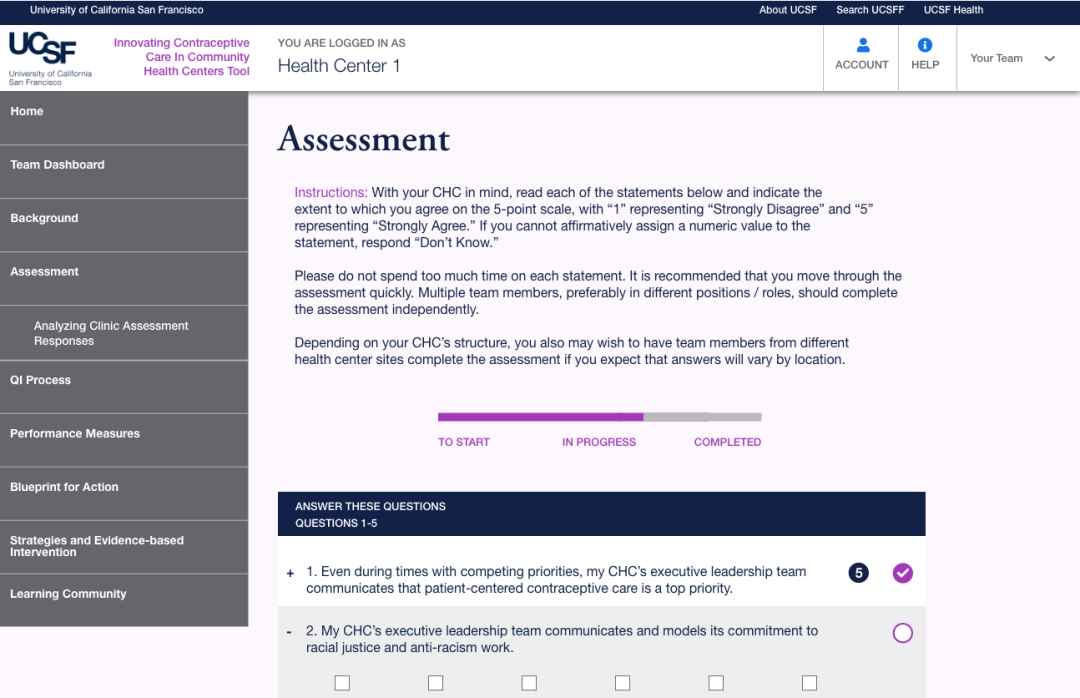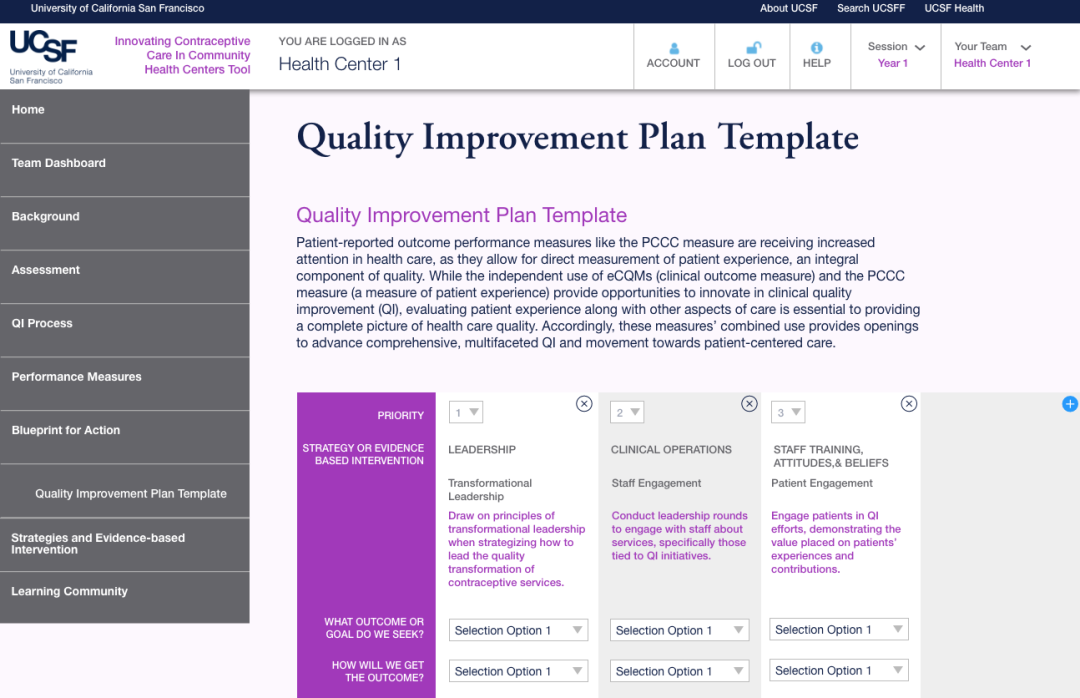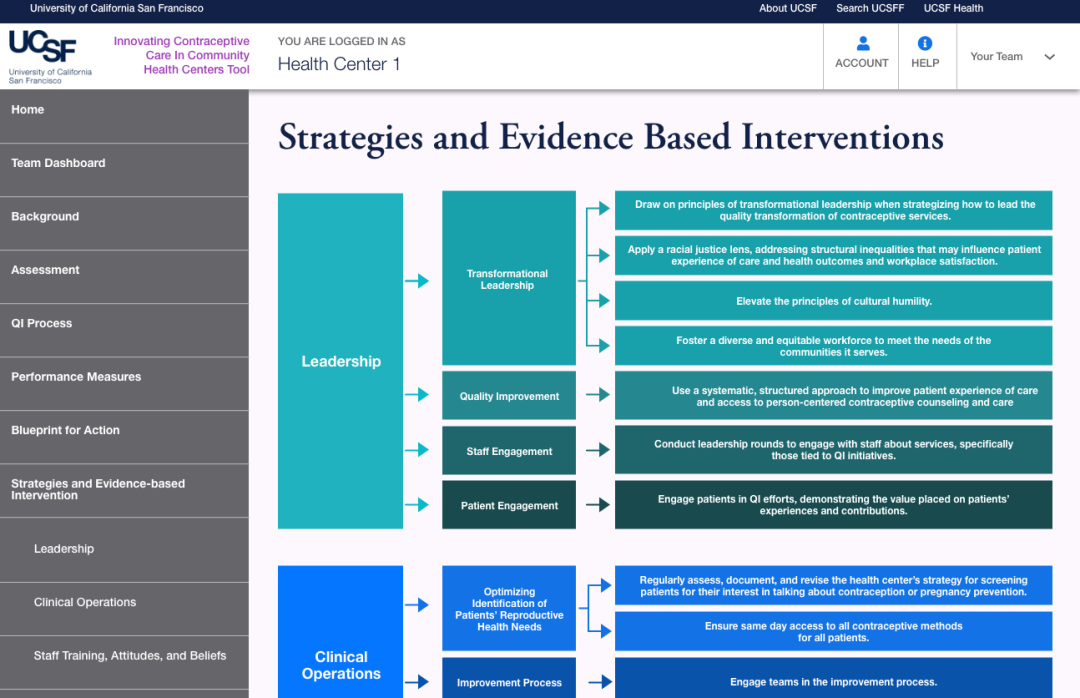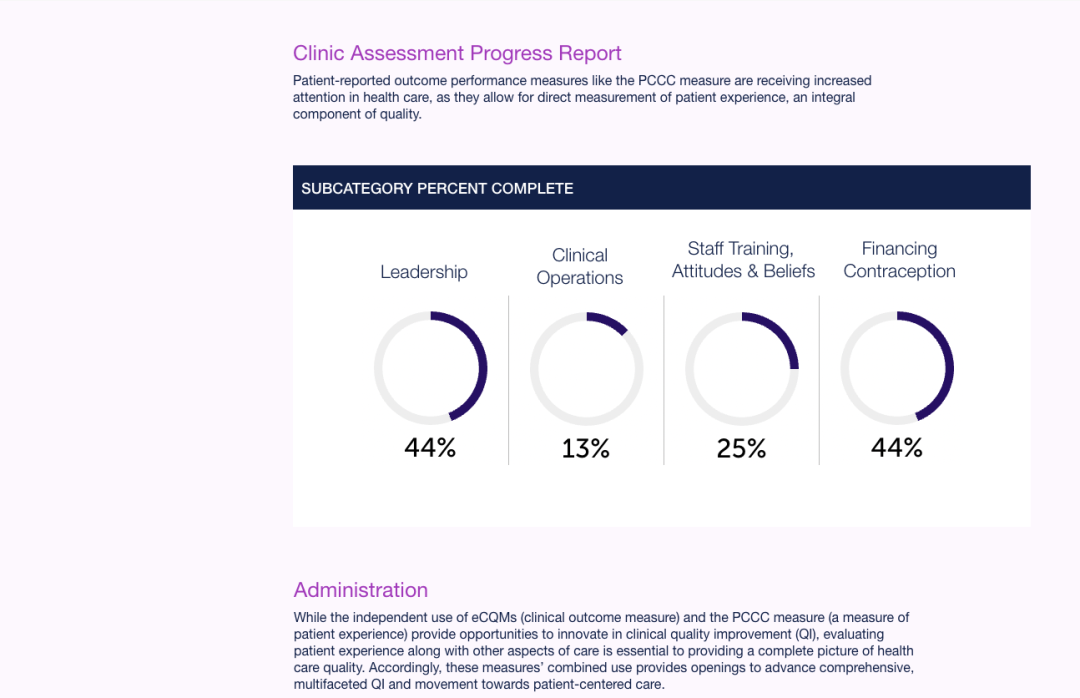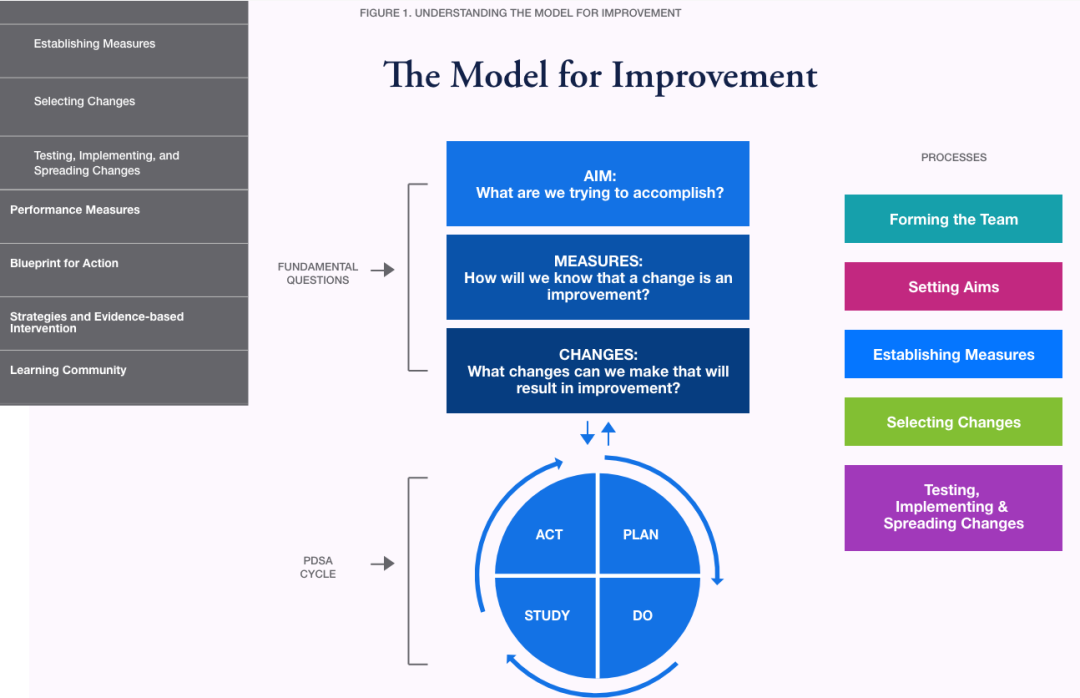Overview
UCSF’s Person-Centered Reproductive Health Program (PCRHP) needed an online training module to provide interactive group-based assessments that assist community health centers in quality improvement efforts. We developed a comprehensive web application that includes individual and team assessments. Scores from these assessments result in action plans administrators can use to improve their quality of care.
About this project
The Innovating Contraceptive Care in Community Health Centers project, led by UCSF’s Person-Centered Reproductive Health Program (PCRHP) and designed and built by Interactive Knowledge, assists CHCs in implementing two types of quality measures: one specific to the patient experience of contraceptive counseling and the other related to clinical care.
Additionally, participants partake in a Quality Improvement (QI) Learning Community centered on reproductive justice and improving contraceptive care. They will also complete a clinic assessment of current practices and then identify and apply strategies to address areas of potential improvement.
The tool assists community health centers in identifying areas of improvement in contraceptive care delivery using two types of quality measures: — one addressing method provision and one addressing patient-centeredness – and to identify and apply strategies to address areas of potential improvement identified using these measures.
The framework offers evidence-based interventions and best practices strategies, as well as specific action steps for change, for improving access to person-centered contraceptive counseling and care in four category areas:
Leadership: Executive leadership reinforces an organizational culture that prioritizes patient experience and the provision of high-quality care
Clinical Operations: Providing comprehensive, integrated contraceptive services in primary care settings requires specific attention to explicitly identifying patients’ reproductive health needs.
Staff Training, Attitudes, & Beliefs: The training and mentorship should not only include foundational information on contraceptive knowledge and technical skills, but also address health equity, bias, and structural oppression.
Financing Contraception: Because of the complexities of financing contraceptive services, community health centers often need to address the financing of contraception as part of efforts to increase patient access to high-quality, person-centered contraceptive care.
The IK approach
Content Managed Site with Administrative Dashboard
UCSF identified two different types of users for this training course–group leaders and individual healthcare providers. To provide the level of administration and privacy needed, we created differing user permissions as well as user views. Individual providers can take the assessment and view their own scores, while group leaders can see individual scores, or their team as a whole. Group leaders can invite users to course, create groups, and assign roles and action items to members. Individual providers can use the results of their assessment to assign themselves action items, and then continually refer back to the assessment for measured improvements.
Data Visualization
We used the results from the assessment to create bold graphs and charts to help users visualize the data quickly. This helps them identify where weaknesses lie within their organization, and how their teams are scoring overall.
Performance Measure Scores found on the group leaders dashboards compare their teams scores to two common industry measurements, Person-Centered Contraceptive Counseling (PCCC) and SINC-Based Contraceptive Care (eCQMs). Thermometer like bar charts show where your team’s scores fall, as compared to the national average.
Fully Responsive
Because we believed that healthcare professionals would be more likely to access the tool via a phone or tablet, Innovating Contraceptive Care was built with a “mobile-first” strategy that allows all the ease of use of mobile, without sacrificing content.
WCAG 2.0 and 2.1 Levels A and AA Compliance
Website accessibility is not only responsible but critical for legal compliance. This application was built with accessibility in mind. We used both automated and semi-automated validation tools, as well as manual validation to test conformance to WCAG 2.1 Level AA. Combining automated and manual testing ensures a more comprehensive approach to compliance evaluations. Manual testing evaluates websites using a combination of keyboard-only interactions, assistive computer technologies, and web browser plug-ins to determine the accessibility of the site. Manual testing is required to root out the deeper errors, which are the issues that have a greater tendency to expose site owners to legal liability. Among them:
- Keyboard testing
- Color contrast testing
- Screen reader testing
- Link testing
- Tables and forms testing
- Cognitive testing
- Mobile testing
The results
UCSF’s Person-Centered Reproductive Health Program (PCRHP) is currently being used by healthcare professionals across the country to self-evaluate adherence to best practices and performance measures.

